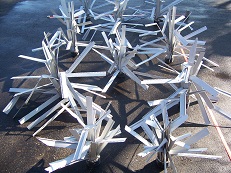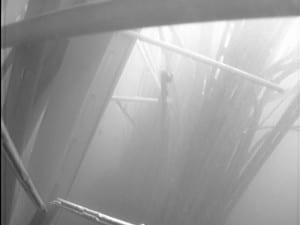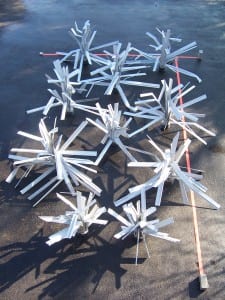Structure Fishing 101
written by Tim Allard
Structures are a big factor in fish habitat and certain types will concentrate fish.
Structures are areas where there is a variance in the depth or contours of the lake bottom.
If you’re new to fishing, knowing how to find structure and understanding how fish relate to it will dramatically improve your ability to find and catch fish. As a term, structure gets used a lot in fishing articles, television shows and presentations by professional anglers. In this guide I’ll define structure, discuss various types and share some tips for fishing them.
What is structure?
Structures are the physical features of a lake or a river bottom. From a fishing perspective, structures are areas where there is a variance in the depth or the contours of the bottom, and these changes can range from subtle to dramatic. Structures can be natural as well as human-made features of the underwater landscape. Structures are a big factor in fish habitat and certain types will concentrate fish.
Before I get any further, let me explain what structure is not. Sometimes cover is incorrectly used interchangeably with structure. Cover refers to objects in or on the water that provide shelter for fish, such as vegetation or a dock. Of course, finding structure and cover together can make great fishing spots (e.g., a hump with a dense weed bed), so it’s no surprise that the two terms get used interchangeably.
Some Basic Structures
Here are some common fishing-structures. A ledge is the beginning of a distinct change in depth. It marks the top of a drop, which is simply the sloping of the bottom towards deeper water. Ledges and drops are main structures that hold many freshwater species, such as walleye and muskie. Add a weedline in close proximity to a ledge or a drop and they can be prime spots.
A hump is a shallow area surrounded by deeper water and often a preferred piece of structure for bass. Humps are sometimes called underwater islands. A hole is the inverse of a hump – a deep pocket in the bottom surrounded by shallow water. Holes are favorite hiding spots of bottom-dwelling hunters, like catfish.
More Advanced Structures
The above items are some basic structures, but they also form the building blocks for more elaborate pieces of structures. What follows are some of the more common fishing structures, but this listing is by no means exhaustive.
One example is a spine. To imagine a spine, first picture an underwater hump as an elastic band. Take that band, stretch it slightly and you’ve got a spine. One of the most common places to find spines is as a continuation or off of a point from a shoreline, but others exist off the end of humps as well.
The contour of spines will vary, some even have fingers running off the sides of them, and their gradient, or slope, will also vary from steep to subtle. Like a hump, spines are surrounded by deeper water, with drops and edges on each of their sides. Long spines can be travel routes for fish as they move towards shore, transitioning from deep to shallow water.
The inverse of a spine is a cut, or trough, which can be described as elongated holes. Most common in flooded areas or reservoirs, many of these structures were streambeds in their former lives before water levels rose above their banks, submerging them. Of course, drops can sometimes contain cuts in their sides that are simply grooves that were not previously riverbeds. Again, these irregularities can attract fish and are worthy of fishing and their ledges can be particularly effective at holding fish or acting as route ways.
Still got that elastic? Holding both ends, bring them together slightly until the band bows. You’ve just created a saddle between two islands or underwater humps (your finger tips). Saddles can be great structures to fish with both deep and shallow water structures as well as being corridors for fish to follow as they move from one structure to the next. Depending on their disposition, fish may be anywhere on the saddle complex. They may be tight to the islands and feeding or positioned slightly off the saddle and inactive. In this case, it pays to know the behaviors of your target species and fish these areas accordingly, but when in doubt, pick the structure apart with different lures to work a variety of depths.
Another piece of structure is the breakline (sometimes shortened to break). A breakline is really just the edge of a drop that runs perpendicular to the shoreline. If you’ve ever trolled along the shore in an S-pattern, running between shallow and deep water, you’ve been fishing the breakline. Sometimes anglers will describe the different breaks as primary and secondary. The primary breakline is the first sharp drop in depth traveling from shore outward; the secondary following thereafter and another major drop in depth. Whether you think of breaks as walls or underwater stairs, they can be good structures to fish. Yet the entire breakline does not always hold fish. What makes them great fish-holding structures is when other elements (like a cut or a bend) or cover (such as a weed edge) are added to a stretch of the break.
Why is Structure Important?
Structure often concentrates fish. Structures provide different advantages to various species (such as corralling baitfish, providing an ambush area, or being close to deep water for comfort). For reasons like the three listed above, many species seldom stray far from structure. Learning how the fish you’re targeting relates to structure and being able to find structure on the water will increase your ability to catch fish. Structures can move you away from shorelines to intimidating expanses of water that may seem void on the surface, but what lies underneath can be fishing hotspots.
Putting Structure in Context
It’s important to keep in mind that structure is but one factor in the finding-fish equation. Finding structure can put you on fish, but it’s not an absolute that you’ll catch them. Structures are often feeding areas, but if there’s no food they’ll likely not hold fish. Weather conditions and seasonal patterns are also important to keep in mind and, again, are part of a larger equation to finding fish.
Other factors affecting if structures hold fish are temperature, oxygen supply, or water quality/light penetration. Since different species have different dispositions, some structures may appeal to certain fish and not others. For example, a 12-foot hump on a gin-clear, rock bottom lake may be a smallmouth bass hotspot, but too bright an area for walleye during the day. Yet at dusk and dawn it might concentrate light-sensitive walleye that move in to feed and ambush prey. Sometimes how well structures produce fish is all about timing and putting environmental and forage factors in your favor.
Using hydrographic maps and fish finders together can make finding structure a relative easy task.
How Fish Relate To Structure
As mentioned, food and environmental factors impact the mood of fish and thus, impact how they relate to structure. A common misnomer is that if fish are not directly on top of structure, they are not there or are not relating to it. Speaking in general terms, fish “on” structure are usually aggressive (add cover to the mix and things could change), while fish suspended “off” of structure are less aggressive or in a neutral mood, resting between feeding binges (unless baitfish are also suspended off the structure). Fish distanced from structure are still relating to it and catchable, so novice anglers should learn to fish both the actual structure as well as its surroundings. It pays to ask, “How do the fish travel to this spot? Is there an obvious route on my hydrographic map?” and “If fish are not directly on the structure, where might they be off of it?”
The Tools of the Trade & Finding Structure
As mentioned earlier, the easiest structures to find are those that extend from land, such as a point. The reason is obvious; one sees the gradual slope on land and knows this piece of structure likely continues into the water. What’s difficult is finding structure when there are not hints from land. This is where a fishing finder and hydrographic maps are critical.
Hydrographic maps illustrate the bottom contours and depths, showing where the structures are on a body of water. Of course the scale of the map will impact the detail of the features it shows. Depth finders are your underwater eyes. They provide a continual reading of the depth below your boat, and help you pinpoint depth changes and find structure. Using hydrographic maps and fish finders together can make finding structure a relative easy task, even on a new lake.
A recent addition to an angler’s arsenal are GPS units, which can hold hydrographic maps as well as store waypoints, allowing you to mark structure once you find it. Of course, carrying some buoys is also handy to help you stay on structure as you fish the entire area.
Tips for Fishing Structure
I won’t try and cover how-to fish the various types of structure in one article, but I will suggest a few tips. First off, working jigs along the bottom and around the edges of structure can catch several species of fish, anglers should not just concentrate on the bottom (whether using jigs or not). Consider trying lures to work other depths around the structures. Also, try and fish “off” of structure as mentioned earlier. By this I mean if trolling the breakline, weave out into deeper water to look for suspended fish. The same concept applies when casting areas, like humps, islands and saddles.
Here’s a tip: fish sometimes suspend off of structure around the same depth as the structure itself. So, a hump that’s 12-feet deep might have a pike several feet away from the edge of the structure, suspended at 12-feet over water with a depth of 25-feet. Another important tip, which I’ve touched on already, is learning to isolate prime structure by considering other factors influencing fish behavior (such as food, cover, environmental elements, and so on).
Once you’ve done your homework and found structure you think will hold fish – take the time and fish it thoroughly. Many anglers work large structures too quickly, and if a big trophy is relating to a certain, special area on the structure (often called “the spot on the spot”) you might pass over her.
Learning about structure is just another way of thinking to solve the “Where are the fish today?” puzzle. Use maps and read up on your favorite species and how they relate to structure and you’ll find yourself catching more fish. Large pieces of structure can be intimidating to fish, so take the time to look for the best areas (considering other fish-factors) and fish them thoroughly.
Share this article with your fellow outdoorsmen:


 Photo: Kate Danson
Photo: Kate Danson MNN: What is this book about and why did you decide to write it?
MNN: What is this book about and why did you decide to write it? 

